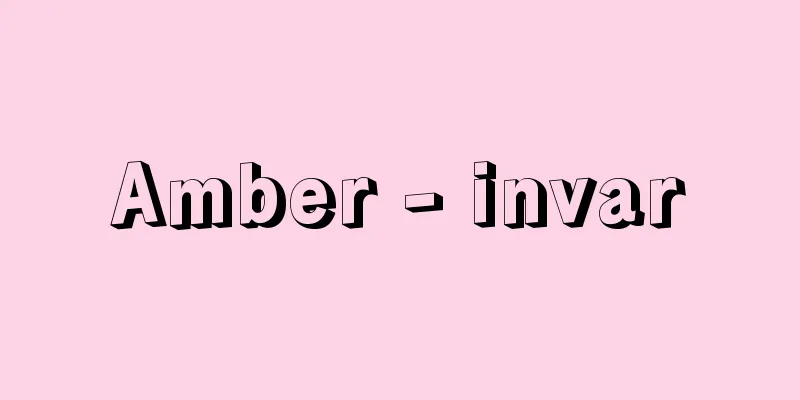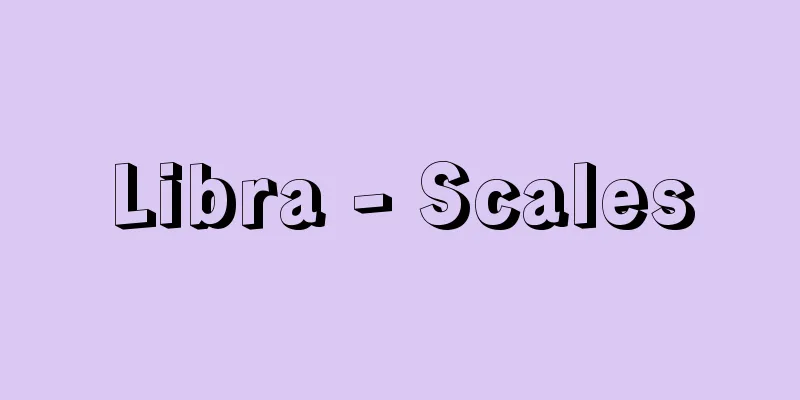Arrangement - henkyoku (English spelling) arrangement English

|
The act of rearranging the performance style, melody, rhythm, lyrics, etc. of a song to suit a specific purpose. This is often called arranging in jazz and pop music in particular, and has become a technique that can affect the weight of a song. In Western art music, since the 18th century, when a close relationship between composers and their works was established, the meaning of the act of arranging itself has become clearly recognized, along with the issue of copyright. Arrangements are divided into various stages depending on the type and degree of the arrangement, from faithful to the original to those that include the arranger's creative element. First, there are those that rewrite operas, choruses, symphonies, etc. into small ensembles without making significant changes for the purpose of simple practice, study, or performance at home, such as piano extracts (Klavierauszung) and vocal scores. Next, there are those that have been interpreted or expanded on the original piece. (1) A new interpretation is added to the tone and structure of the piece by changing the instrument arrangement from a small to a large one (such as Ravel's orchestration of Mussorgsky's piano piece Pictures at an Exhibition). (2) A piece that transfers the structure of an existing piece of music to another genre while maintaining its structure (such as the instrumentalization of vocal music, or vice versa. For example, the parody technique of changing the lyrics of cantatas and masses). (3) A piece that makes essential changes to the original piece, such as adding new accompaniment or intervening in the actual piece itself. (4) A new piece is created using the melody of the original piece as material (such as polyphonic vocal music with fixed melodies such as monophonic chants, chorales, and secular songs, and Liszt's piano paraphrases). Variations can also be considered a kind of arrangement, but they are distinguished from arrangements because variations focus on the process of transformation of a theme itself. They are also distinguished from revisions of the same work, additions to unfinished works, etc. [Eizaburo Tsuchida] Source: Shogakukan Encyclopedia Nipponica About Encyclopedia Nipponica Information | Legend |
|
楽曲の演奏形態や旋律、リズム、歌詞などを目的に応じて改編すること。とくにジャズやポピュラー音楽ではアレンジと称してよく用いられ、曲のウェイトを左右するほどの手法になっている。 西洋の芸術音楽では、18世紀以降、作曲家と作品の間に密接な関係が確立されてから、著作権の問題とともに、編曲行為そのものの意味が明確に意識されるようになった。編曲はその種類や度合いにより、原曲に忠実なものから、編曲者の創造的要素が加わったものまでさまざまな段階に分かれる。まず単なる練習や学習、家庭における演奏などのために、オペラや合唱曲、交響曲などを重要な変更を加えないまま小編成のものに書き改めるものがあり、ピアノ抽出譜Klavierauszung(ドイツ語)やボーカル・スコアなどがこれにあたる。 次に原曲に解釈、敷衍(ふえん)を加えたものがある。〔1〕楽器編成を小規模なものから大規模なものへと変えることによって、音色面、構造面などに新解釈を加えたもの(ラベルによるムソルグスキー原曲のピアノ曲『展覧会の絵』の管弦楽化)。〔2〕既存の楽曲の骨格を保ちながら他のジャンルに移したもの(声楽曲の器楽曲化、またはその逆。カンタータやミサ曲などで歌詞を変えるパロディー手法など)。〔3〕原曲に新たに伴奏を付加したり実体そのものに介入するなど、本質的な変更を加えるもの。〔4〕原曲の旋律などを素材として新しい楽曲を構成すること(単旋律聖歌やコラール、世俗歌謡などを定旋律とした多声声楽曲、リストのピアノ・パラフレーズ作品など)。 なお変奏曲も一種の編曲と考えることもできるが、変奏曲は主題の変容過程そのものに焦点をあてる手法のため、編曲とは区別される。また、同一作品の改訂、未完作品の補足などともいちおう区別されている。 [土田英三郎] 出典 小学館 日本大百科全書(ニッポニカ)日本大百科全書(ニッポニカ)について 情報 | 凡例 |
Recommend
Life guidance - Seikatsushido
In Japan, the term "seikatsu shidou" (l...
Siberia - Siberia (English spelling)
This region constitutes the major part of the Asi...
Fuke sect
A sect of Zen Buddhism founded by the Chinese Tan...
Kato
A Chinese poet of the mid-Tang Dynasty. His pen n...
S-Suku - S-Suku
…The oldest carvings, of elephants and hippos, ar...
Imuhashira - Imuhashira
...This refers to a cypress pillar that is erecte...
Traffic crime
This refers to crimes related to land, water, and ...
Okunai-sama - Okunai-sama
...The heads of two figures, a man and a woman, o...
Mon [State] (English spelling)
A state in the southeast of Myanmar. The former di...
Female Gidayu - Onnagidayu
Gidayu storytelling by women. It is also called &...
Anorthite (English spelling)
A type of mineral. Also called anorthite. Plagiocl...
Ueda Shozaburo
1894-1958 Educator and educational critic from th...
Family: Angelfish
...Until recently, the scientific name of this sp...
Stoma - pore
Small holes on the surface of a plant. Most of th...
Oshima
[1][1] The main island of the Amami Islands in Kag...









